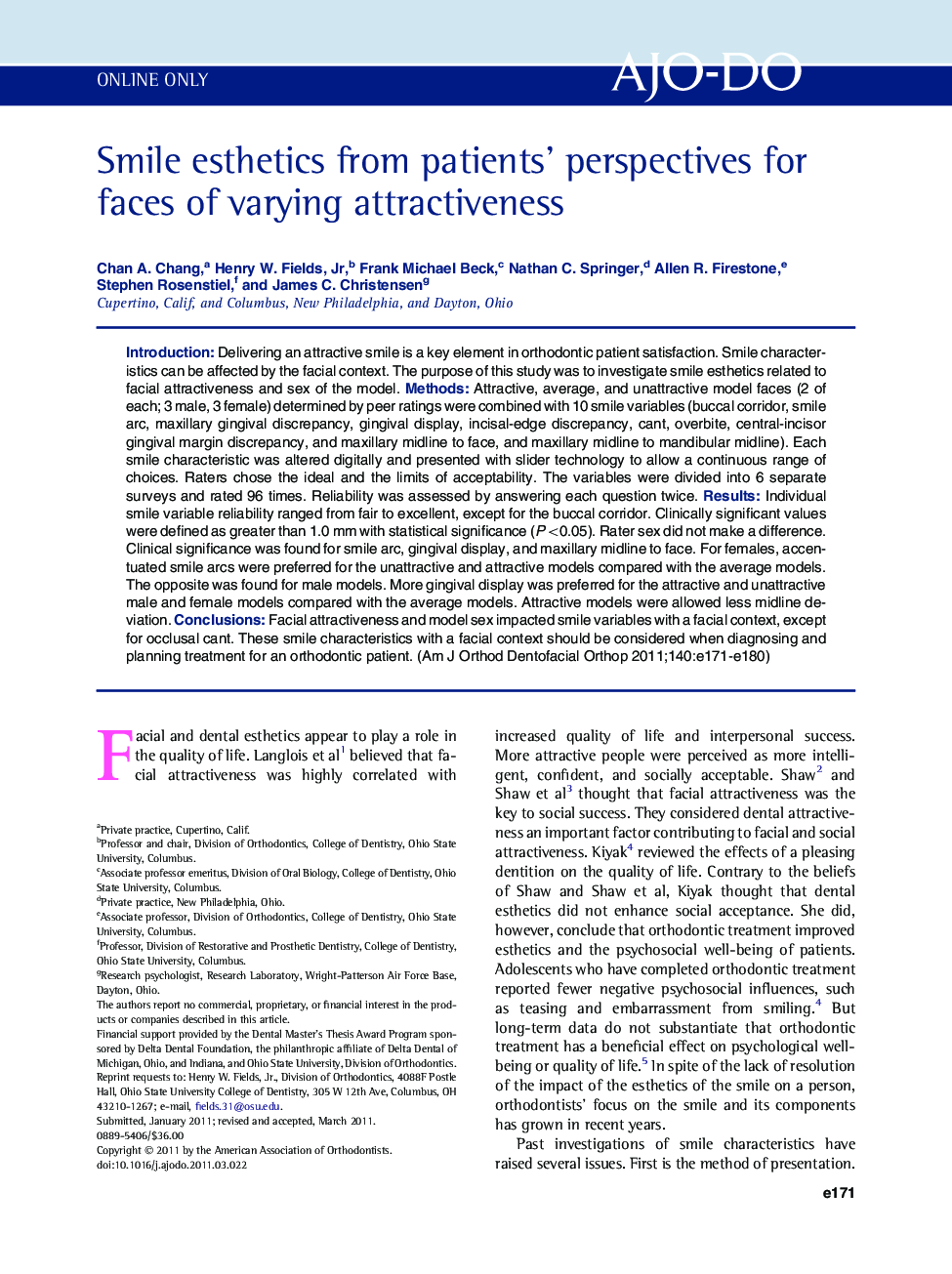| Article ID | Journal | Published Year | Pages | File Type |
|---|---|---|---|---|
| 3118190 | American Journal of Orthodontics and Dentofacial Orthopedics | 2011 | 10 Pages |
IntroductionDelivering an attractive smile is a key element in orthodontic patient satisfaction. Smile characteristics can be affected by the facial context. The purpose of this study was to investigate smile esthetics related to facial attractiveness and sex of the model.MethodsAttractive, average, and unattractive model faces (2 of each; 3 male, 3 female) determined by peer ratings were combined with 10 smile variables (buccal corridor, smile arc, maxillary gingival discrepancy, gingival display, incisal-edge discrepancy, cant, overbite, central-incisor gingival margin discrepancy, and maxillary midline to face, and maxillary midline to mandibular midline). Each smile characteristic was altered digitally and presented with slider technology to allow a continuous range of choices. Raters chose the ideal and the limits of acceptability. The variables were divided into 6 separate surveys and rated 96 times. Reliability was assessed by answering each question twice.ResultsIndividual smile variable reliability ranged from fair to excellent, except for the buccal corridor. Clinically significant values were defined as greater than 1.0 mm with statistical significance (P <0.05). Rater sex did not make a difference. Clinical significance was found for smile arc, gingival display, and maxillary midline to face. For females, accentuated smile arcs were preferred for the unattractive and attractive models compared with the average models. The opposite was found for male models. More gingival display was preferred for the attractive and unattractive male and female models compared with the average models. Attractive models were allowed less midline deviation.ConclusionsFacial attractiveness and model sex impacted smile variables with a facial context, except for occlusal cant. These smile characteristics with a facial context should be considered when diagnosing and planning treatment for an orthodontic patient.
